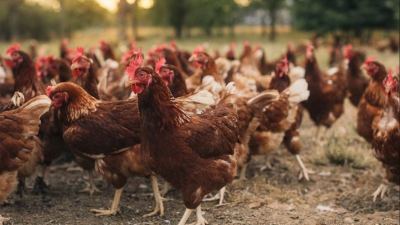How organic trace minerals impact reproductive efficiency

Organic trace mineral supplementation can have an effect on reproductive efficiency for generations.
Providing proper cattle nutrition through all stages of gestation is vital not only for the cow but for the developing calf.
Building a strong foundation in a cow herd or a heifer development or purebred program starts with genetics — but that foundation can also be affected by management and nutrition. Reproductive failures are often tied to suboptimal nutrition, which can impact not only the individual animal but the well-being of her offspring, too. This phenomenon, which is known as maternal or fetal programming, illustrates how the nutritional and health status of the mother during pregnancy can subsequently impact the health and productivity of her calf.
Fetal programming
Maternal nutrition can impact the fetus and potentially alter its development, not just in utero but later in the calf’s life as well. Compromised nutrition during gestation can result in low calf birthweight, increased pre-weaning mortalities, poor growth rates and even getting cattle bred back in a timely manner.
When it comes to maternal cattle nutrition, the focus has traditionally been on the last trimester of gestation, since this is the time when the fetus grows most rapidly, taxing the cow’s energy and mineral reserves. As a result, many nutritional strategies focus specifically on those 90 or 60 days prior to calving. But what about the impact of maternal nutrition during early and mid-gestation?
A recent publication discussed the importance of proper cattle nutrition throughout all phases of gestation and the impact that nutrition can have beyond conception rates. In another study, during which early-gestation cows were fed either 100% or 55% of their nutrient requirements, no differences were observed in the calves’ bodyweight and gains, but the lung and trachea weights of calves born to nutrient-restricted dams were lower, and those smaller weights could impact how these calves react to respiratory challenges in the future.
Nutrient restrictions mid-gestation have also been shown to impact ovary and luteal tissue size and mass, which can directly affect the heifer’s reproductive efficiency later in life. The nutritional status of the cow during late gestation (e.g., six to nine months into gestation) has also been shown to impact the calf’s muscle fiber formation, which can impact its birthweight, weaning weight and even its carcass weight at harvest.
The reproductive performance of breeding cattle is highly dependent on their nutritional status. Trace minerals are involved in the synthesis of reproductive hormones, the reduction of free radicals and the improvement of the uterine microenvironment for embryonic implantation, as well as fetal growth and development. Considering that, for the most part, reproductive organs develop during early gestation, it is clear how the dam’s nutritional and trace mineral status can impact fetal development and future performance.
Trace mineral supplementation
Forages can vary in terms of their trace mineral concentration. As such, supplemental copper, zinc, manganese and selenium are needed to optimize the cattle herd’s trace mineral status, as meeting their trace mineral requirements is fundamental for achieving optimal immunity, health, reproductive efficiency and growth.
Knowing this, supplemental trace minerals are provided to bridge the gap between the amount available through the forages and the cow’s nutritional requirements. However, the form in which those trace minerals are provided — either inorganic or organic — can impact how the herd will respond to the trace mineral program.
Inorganic versus organic trace minerals
Inorganic trace minerals — including sulfates, oxides, chlorides and hydroxides — are typically inexpensive byproducts of other industrial processes and are often fed in excess to avoid deficiencies. However, due to the lower relative bioavailability of inorganic trace minerals, animals do not necessarily benefit from over-supplementation. Additionally, these high levels of inorganic trace minerals are often associated with mineral-to-mineral antagonisms, a higher degree of vitamin degradation and higher levels of excretion into the environment.
Organic trace minerals are closer to the form in which trace minerals are found in nature. As a result, organic trace minerals offer better absorption and utilization, which translates to higher bioavailability and fewer dietary interactions — meaning that minerals offered in an organic form can typically be supplemented at lower levels.
Benefits of organic trace minerals
The advantages of supplementing with organic trace minerals have been well-documented and include improved ovarian activity, increased conception rates and getting cattle bred back sooner.
These benefits should come as no surprise, given the impact that the trace mineral source can have not only on the trace mineral status of breeding cattle, but on the gene expressions linked to their reproductive performance as well. These effects were illustrated in a nutrigenomics study comparing organic trace minerals vs. inorganic sources.
- In the study, researchers evaluated the effect of replacing inorganic trace minerals with organic trace minerals on gene expression levels in replacement heifers.
- The results indicated that the trace mineral source impacted 580 differentially expressed genes related to reproductive performance, all of which play essential roles in early pregnancy, indicating that supplementation of organic trace minerals can potentially benefit reproductive performance through improved regulation of the estrous cycle, shorter calving intervals and improved implantation rates.
The impact of organic trace minerals lives on
So, how do organic trace minerals affect fertility parameters in successive generations?
In a recent beef study, the response of Angus and Brangus cows and their calves to either inorganic or organic trace mineral sources was evaluated.
- For cows supplemented with organic trace minerals 90 days pre-calving throughout the heifer developmental period (year one), heifer calves reached puberty nine days earlier and were confirmed pregnant eight days earlier than heifers from the inorganic-supplemented cows.
- The results for year two, where cows were supplemented for the entire year and calves were thus exposed to organic trace mineral supplementation from conception throughout the heifer development period (year two), the heifers from cows supplemented with organic trace minerals reached puberty 41 days earlier and were confirmed pregnant 18 days earlier than heifers from inorganic mineral-supplemented cows.
Clearly, the trace mineral source can directly impact fertility parameters in successive generations — which is also known as the fetal programming effect. Additionally, year-round supplementation through a high-quality trace mineral program can impact both the individual animal and her female offspring’s reproductive efficiency, as measured by her age at puberty, age at calving and lifetime performance.
Optimizing trace mineral status and reproductive efficiency is especially important in purebred herds and operations focusing on embryos. When looking at the follicular dynamics and embryo quality of beef cows, researchers have reported that supplementation with organic trace minerals results not only in the increased diameter of ovulatory follicles but also leads to improved in-vitro maturation and embryo cleavage. This is significant, as early embryo cleavage is a strong biological indicator of embryo potential and is often used as a measure of embryo quality.
Implications
- Organic trace minerals can potentially benefit reproductive performance, including via improved regulation of the estrus cycle, shorter calving intervals and improved implantation rates, as well as reproductive efficiency in successive generations.
- As such, when developing one’s own breeding cattle or acquiring replacement females, the emphasis should not only be on genetics; nutritional predisposition should also be taken into consideration.
- Given the potential return on investment associated with organic trace minerals in terms of the health, reproductive efficiency and gains of the cattle, year-round supplementation is not only economically feasible but could also have a direct impact on the future performance and profitability of the herd.
















